Receptive Language Disorder: Why Kids Struggle to Understand Speech
What Makes Language Comprehension Difficult for Some Children?
Receptive language disorder is a neurological condition that affects children’s ability to understand spoken and written language. This disorder impacts how kids comprehend words, follow directions, and engage socially, often leading to challenges in learning and communication. Early identification and intervention are key to helping these children thrive academically and socially.
Defining Receptive Language Disorder: Understanding the Challenge
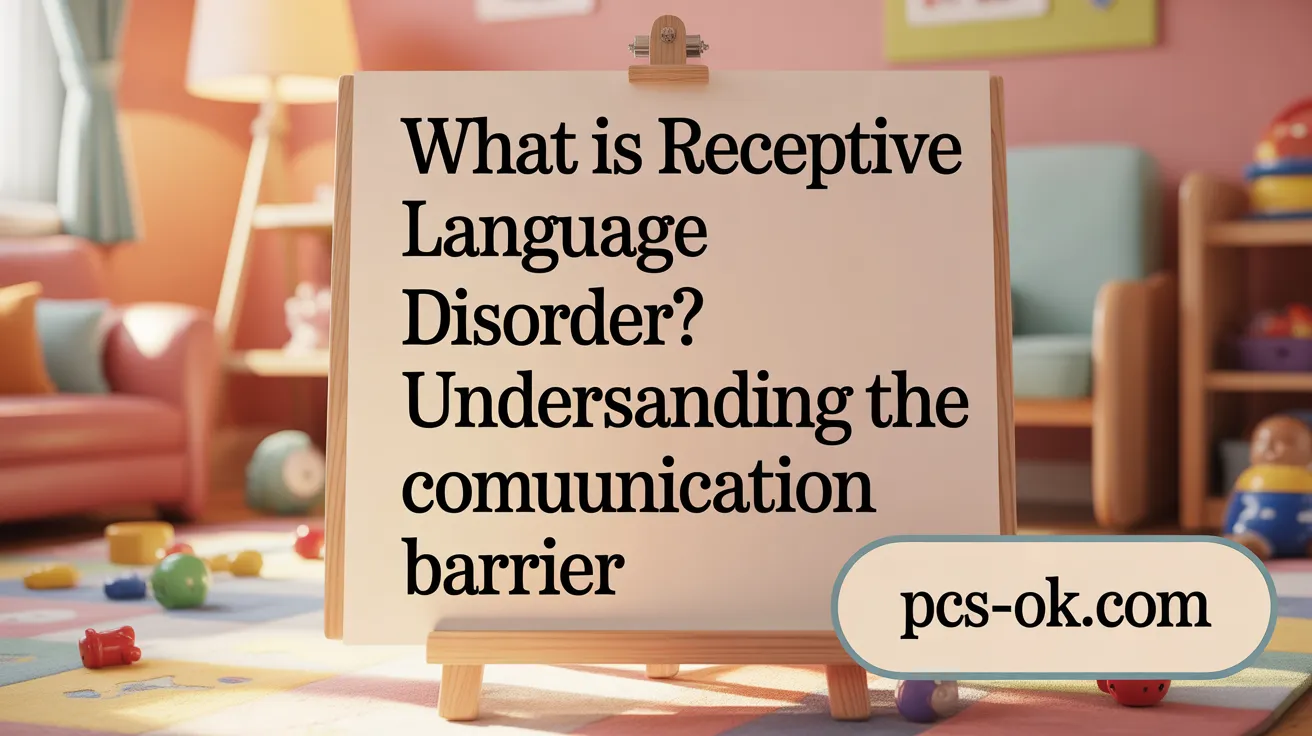
What is receptive language disorder and how is it defined?
Receptive language disorder (RLD) is a neurological condition that affects how individuals understand spoken and written language. It involves difficulties in processing and interpreting the words and sentences they hear or read. People with RLD often struggle to grasp the meaning behind spoken instructions, conversations, or stories, which can affect their ability to communicate effectively.
This disorder is not linked to hearing problems or intelligence levels. Instead, it originates from differences in brain function that impact language comprehension. Those affected might find it hard to follow directions, answer questions appropriately, or understand jokes and social cues.
The neurological basis of receptive language disorder
At its core, RLD stems from how the brain processes language. The areas responsible for understanding language, such as parts of the temporal and parietal lobes, may develop differently or sustain injury, leading to comprehension challenges. This can be developmental, present from early childhood, or acquired later due to brain injuries, strokes, or neurological conditions.
How RLD differs from hearing loss and speech disorders
It’s important to distinguish RLD from hearing impairments; children with hearing loss do not hear the language signals clearly, whereas those with RLD hear the words but struggle to understand or interpret their meaning. Similarly, speech disorders primarily affect the production of speech, such as stuttering or articulation issues. RLD specifically impacts understanding, making it a separate but sometimes co-occurring challenge.
Impact on communication and daily life
Receptive language difficulties can significantly influence a person’s daily functioning. Children might have trouble following classroom instructions, participating in conversations, or understanding reading material. Adults with RLD may find social situations confusing, misunderstand questions, or respond inappropriately. As a result, individuals often experience frustration, decreased self-esteem, withdrawal from social interactions, and challenges in academic or work environments.
Addressing RLD early through speech-language therapy and supportive communication strategies can substantially improve understanding and social participation, helping individuals lead fulfilling lives.
Recognizing Symptoms: How Receptive Language Disorder Shows in Children
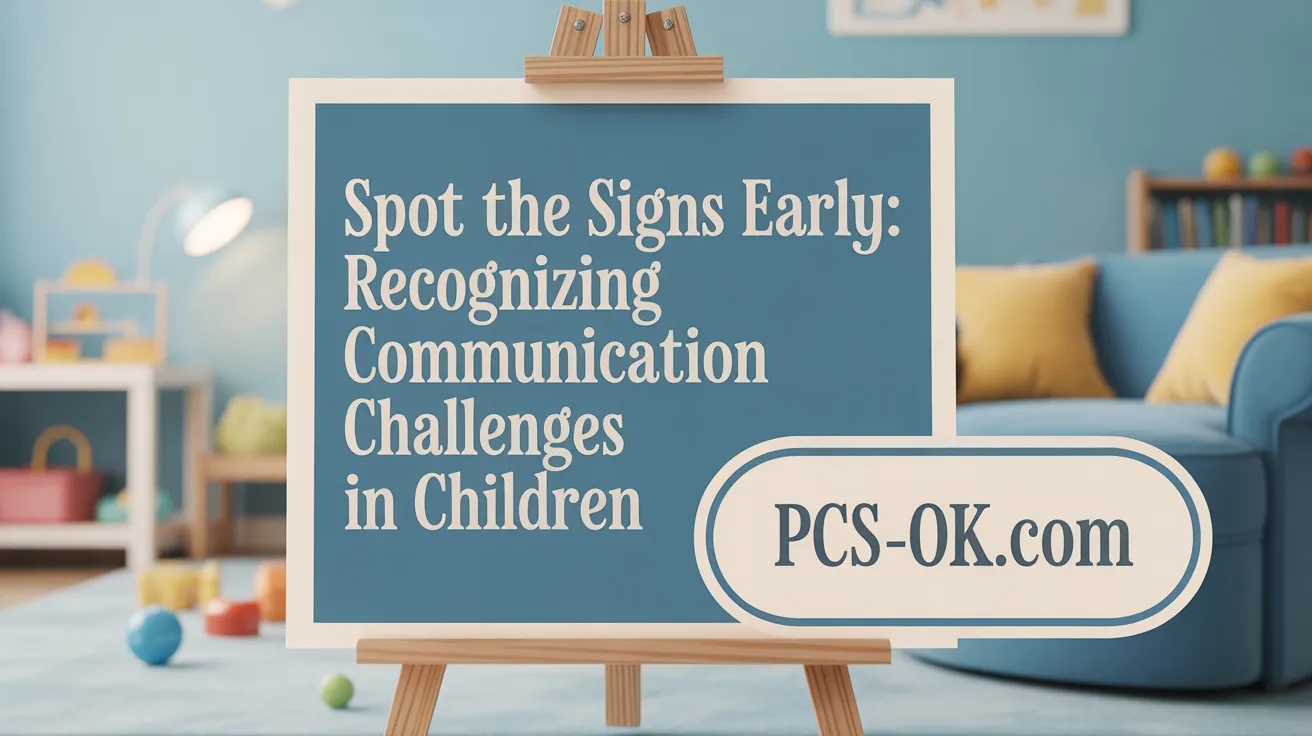
What are the common symptoms and signs of receptive language disorder in children?
Children with receptive language disorder often struggle to understand spoken words, concepts, and instructions. This can cause difficulties in following directions and providing appropriate responses. In preschoolers, signs include not seeming to listen when spoken to, trouble identifying objects when asked, and not responding when called by name.
As children grow older, signs become more noticeable. School-aged children may find it hard to understand stories, jokes, or conversations, and may have trouble maintaining focus when others speak. They might give vague or unrelated responses, showing they did not fully grasp what was said.
In teenagers, these difficulties can extend to understanding idioms, jokes, or the broader context of discussions. They may appear uninterested, withdrawn, or frustrated during communication.
Adults with receptive language challenges may find it hard to follow conversations, understand instructions at work, or engage fully in social activities. They often miss subtle cues or figurative language, which can impact their social and professional lives.
Emotional and social manifestations
Individuals with receptive language disorder may experience feelings of frustration or anxiety due to ongoing communication misunderstandings. This can lead to withdrawal from social interactions to avoid embarrassment or confusion.
Additionally, struggles with understanding social cues or jokes can result in misunderstandings and social isolation, which can impact self-esteem and emotional well-being.
Examples of difficulties in comprehension and communication
- Following spoken directions and sequential instructions
- Understanding stories, jokes, or idiomatic expressions
- Answering questions appropriately based on what was heard
- Organizing thoughts for speaking or writing
- Recognizing and interpreting social cues and gestures
Early identification of these signs and seeking professional assessment can lead to effective interventions, ultimately helping children improve their comprehension skills and social interactions.
Causes and Diagnosis: Uncovering the Roots of Receptive Language Disorder
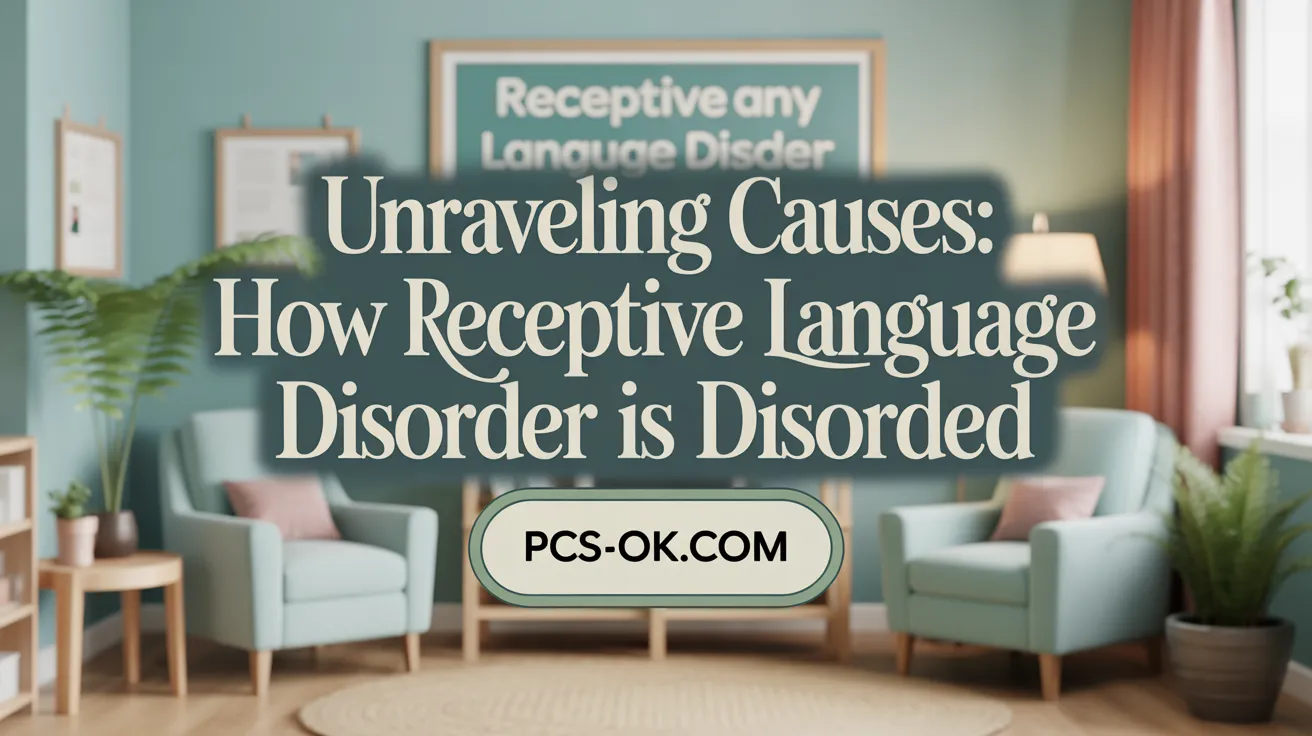
What causes receptive language disorder and what are the contributing factors?
Receptive language disorder is mainly a developmental condition that impacts how well a person can understand spoken or written language. It is not typically caused by hearing problems or simply by being exposed to multiple languages during early development.
Contributing factors include genetic predispositions, which can influence brain development related to language skills. Developmental delays and neurological conditions such as autism spectrum disorder, Down syndrome, or cerebral palsy often accompany or contribute to receptive language difficulties.
Environmental influences are also crucial. Limited exposure to rich language interactions during critical periods of early childhood can hinder receptive language development. Brain injuries, tumors, or illnesses acquired later in life—such as stroke or traumatic brain injury—can also impair understanding abilities.
Often, the exact cause remains unclear. It is believed that a combination of genetic, environmental, and neurological factors interacts to lead to receptive language disorder.
How is receptive language disorder diagnosed?
Diagnosis of receptive language disorder involves a detailed process carried out by speech-language pathologists or similar professionals. The evaluation includes standardized language comprehension tests that measure understanding of spoken and written language.
Clinicians observe communication behaviors during play and conversation, assessing how well a child or adult follows directions and responds to questions. Hearing tests are essential to rule out hearing impairments which can mimic or contribute to language comprehension issues.
The diagnosis requires demonstrating significant difficulty understanding language that is inconsistent with other aspects of development or intelligence. The severity is often gauged by comparing receptive and expressive language abilities.
Developmental history is thoroughly reviewed to differentiate this disorder from other conditions like autism or cognitive impairments. Factors such as family history and cultural background are also considered.
Standardized scores, observation, and developmental assessments help confirm the presence and extent of receptive language challenges. Early diagnosis, usually by age 4, is vital for effective intervention and support.
Treatment and Therapy: Helping Children Overcome Comprehension Barriers
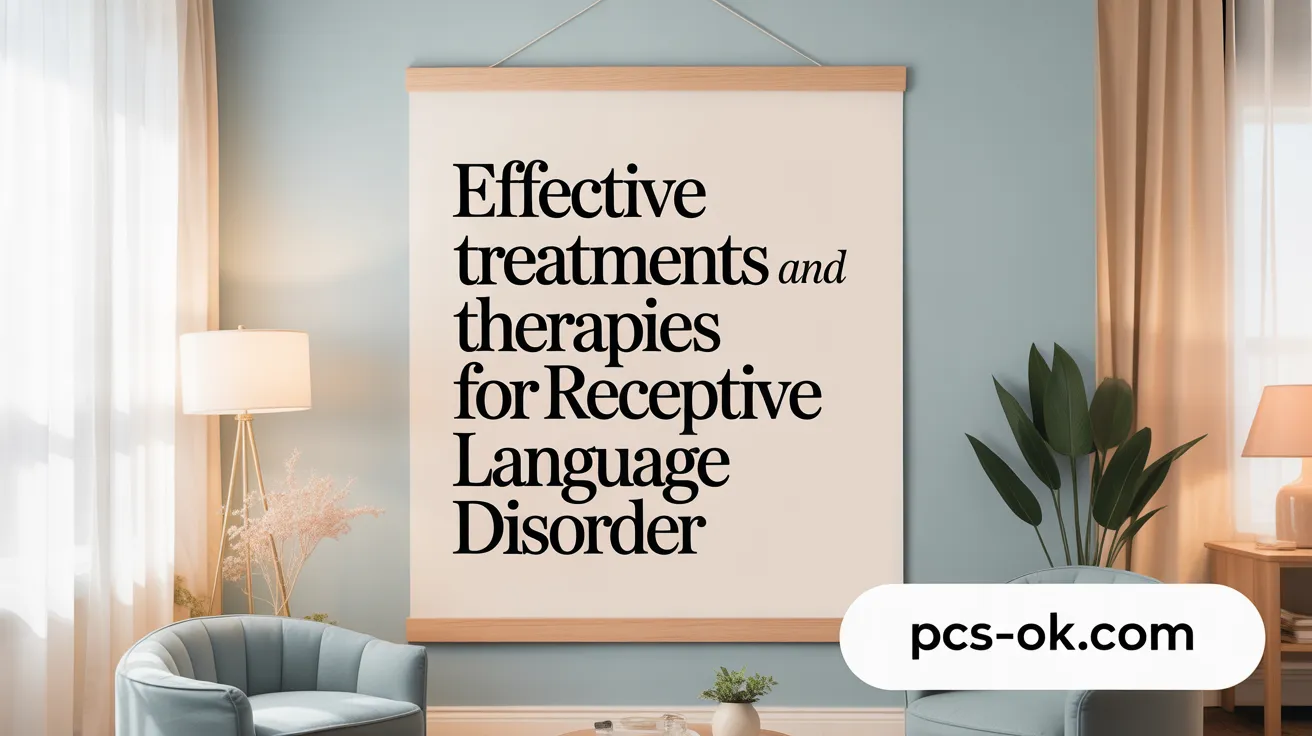
What treatment options and therapy strategies are available for children with receptive language disorder?
Children with receptive language disorder benefit most from targeted speech-language therapy that focuses on improving understanding and processing of spoken language. Therapists use a variety of techniques designed to increase vocabulary, enhance listening skills, and help children follow instructions more effectively.
A common approach involves activities like stories, role-playing, and listening games that encourage children to listen carefully and respond appropriately. For example, therapy might include following multi-step directions, participating in storytelling exercises, or using picture cards to connect words with images.
Multisensory and play-based interventions are especially effective. These include activities that combine visual, auditory, and tactile cues, such as using colorful picture books, gestures, and hands-on objects to reinforce learning.
Assessment by a speech-language pathologist (SLP) is essential to tailor therapy to each child’s specific needs. The SLP develops customized plans that may involve using visual supports, communication apps, or technology to enhance understanding and engagement.
Early and ongoing intervention is the most promising approach. Starting therapy at a young age helps children develop stronger language skills that support academic and social success. The length and intensity of therapy vary depending on the child’s progress but require consistent effort from both professionals and families.
Family and school support play vital roles. Parents are encouraged to participate by reading together, asking questions, and practicing new words and concepts at home. Schools can provide additional assistance through special programs or individualized education plans (IEPs) that incorporate speech therapy activities into the classroom.
Overall, a comprehensive approach combining therapy, family involvement, and educational support can significantly improve language comprehension, helping children function better socially, academically, and in daily life.
| Aspect | Description | Additional Details |
|---|---|---|
| Therapy Techniques | Dialogue, storytelling, follow-the-directions | Customized plans based on assessment |
| Use of Multisensory Methods | Visual aids, gestures, hands-on activities | Enhances engagement and learning |
| Family & School Support | Reading, questioning, structured routines | Reinforces therapy goals |
| Early Intervention | Starting therapy young | Improves outcomes and social skills |
| Duration & Commitment | Variable, based on severity | Continuous support for best results |
Fostering a supportive environment, using diverse therapy strategies, and maintaining a strong home and school connection are vital in helping children overcome the challenges presented by receptive language disorder.
Supporting Language Growth: Practical Strategies and Educational Resources
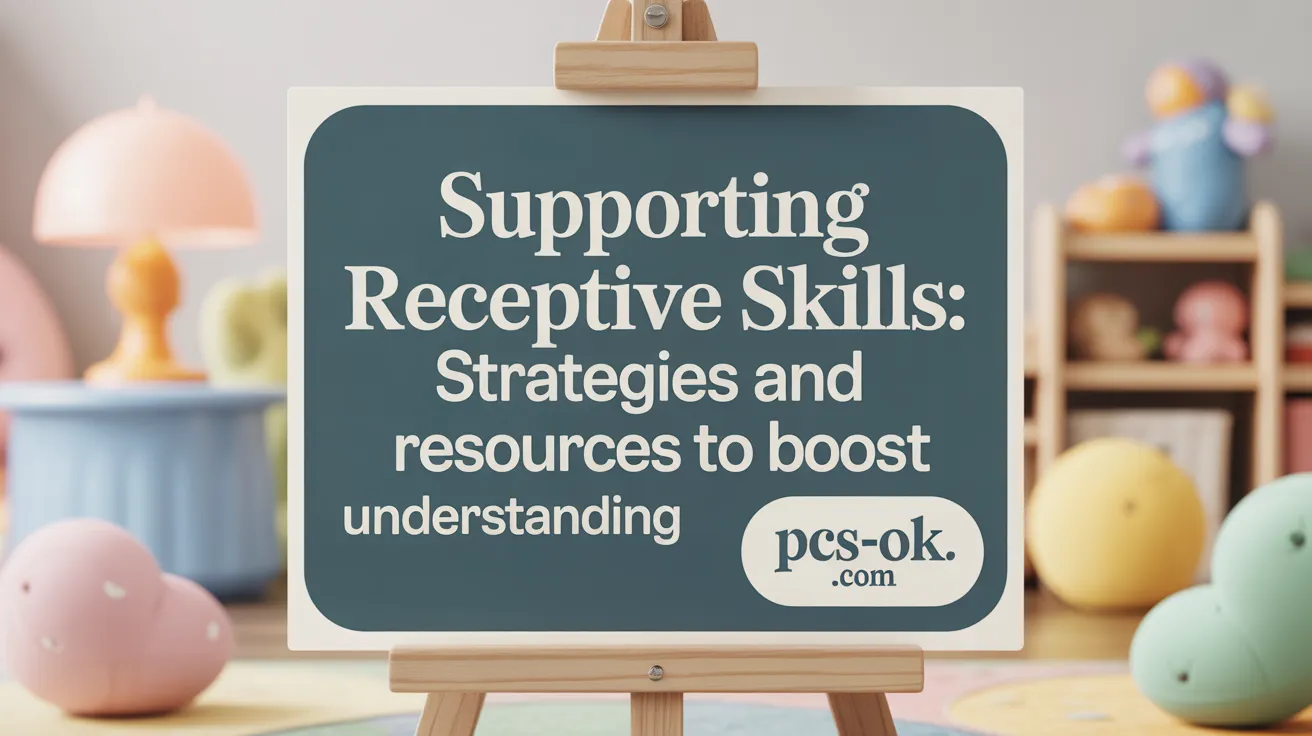
What strategies can help support children in improving their receptive language skills?
Supporting children’s receptive language development requires a thoughtful approach that emphasizes clear communication and active engagement. Parents and caregivers should use simple, easy-to-understand language, face the child during conversations, and utilize visual aids such as pictures or gestures to help interpret instructions.
Breaking down complex directions into smaller, manageable steps makes comprehension easier for the child. Repeating information and encouraging questions are important techniques for ensuring understanding. Reading aloud, storytelling, and engaging in interactive play like “Simon Says” or labeling objects during activities can effectively strengthen comprehension.
Partnering with speech-language therapists and applying research-supported methods such as visual prompting, modeling correct responses, and creating a language-rich environment are essential practices. Consistent use of these strategies fosters better receptive language skills and helps children connect words with their meanings.
What educational resources and activities can enhance a child’s language comprehension?
Educational activities designed to develop receptive language involve immersive and interactive experiences. Using picture books allows children to associate words with images, enhance vocabulary, and follow storylines. Asking children to point to objects or select correct definitions encourages active participation and understanding.
Play-based exercises like “I Spy,” memory games, and sorting tasks help children practice following directions, categorize objects, and process visual and linguistic cues. Real-life activities such as grocery shopping simulations, household object identification, and role-playing scenarios promote understanding of everyday language use.
Evidence-based techniques such as posing WH questions (“What,” “Where,” “Who”), barrier tasks, and narrative games are beneficial for developing both receptive and expressive language. These activities are engaging, practical, and adaptable to various developmental levels, making them effective tools for enhancing comprehension.
Creating a supportive environment and choosing appropriate tools
Furthermore, creating an environment filled with accessible language, routines, and visual cues supports ongoing development. Consistency in daily routines, supportive gestures, and visual schedules help children predict and understand language in context.
Using a range of resources including educational apps, speech therapy programs, and interactive story platforms can also be valuable. These tools supplement traditional activities and provide additional opportunities for practice and reinforcement outside of therapy or school settings.
| Strategy/Resource | Description | Additional Tips |
|---|---|---|
| Visual Aids | Pictures, videos, and flashcards to reinforce understanding | Make visual aids colorful, clear, and relevant |
| Play-Based Activities | Games like “Simon Says,” I Spy, and sorting exercises | Keep activities fun, short, and interactive |
| Storytelling and Reading | Picture books, storytelling apps, audiobooks | Encourage discussion, ask questions during reading |
| Real-Life Tasks | Grocery shopping, role-playing, household chores | Connect language to everyday experiences |
| Technology Resources | Educational apps, speech therapy software | Use tools that are age-appropriate and engaging |
Supporting receptive language skills is crucial for children’s overall communication development and social participation. Implementing these strategies and utilizing diverse educational resources can significantly improve their understanding and ability to process spoken and written language.
The Broader Impact and Clearing Up Myths about Receptive Language Disorder

Receptive language disorder significantly influences how children develop socially, academically, and emotionally. When a child struggles to understand spoken or written language, it can lead to difficulties in following instructions, grasping new concepts, and learning vocabulary, all of which are essential for academic success. These comprehension challenges often result in poor performance in reading, writing, and overall classroom engagement.
Socially, children with receptive language issues may find it hard to participate in conversations, understand jokes, or interpret social cues. This can cause feelings of isolation, low self-esteem, and frustration, sometimes leading to withdrawal from peer interactions.
Emotionally and developmentally, persistent communication difficulties can contribute to behavioral issues. Children might react with anger, anxiety, or frustration when they are misunderstood or unable to express themselves effectively.
Many misconceptions surround receptive language disorder. Some assume it is the same as hearing impairment, but these are distinct; children often have normal hearing but difficulty processing language. Others believe children simply are not listening on purpose, which overlooks the genuine processing challenges involved. There’s also a misconception that only young children are affected or that they will outgrow the disorder without intervention. In reality, when left untreated, receptive language difficulties can persist into adolescence and adulthood.
Understanding that receptive and expressive language disorders are different is crucial. While receptive issues block understanding, expressive difficulties relate to articulating thoughts and feelings. Both can coexist, and targeted speech therapy can greatly improve outcomes.
Early diagnosis and continuous support are vital. Speech-language therapy, visual aids, and engaging, age-appropriate activities allow children to develop stronger comprehension skills, boosting their confidence and enabling better participation in daily activities.
In summary, dispelling myths and recognizing the wide-ranging impact of receptive language disorder help in fostering effective support and understanding, ultimately improving children’s communication skills and overall well-being.
Moving Forward: Hope and Help for Children with Receptive Language Disorder
Receptive language disorder presents real challenges in how children understand and interact with the world around them. Recognizing its signs early and seeking professional evaluation can dramatically improve outcomes through targeted speech therapy and supportive home environments. With awareness, patience, and appropriate intervention, children struggling with language comprehension can develop the skills they need to succeed academically, socially, and emotionally, transforming struggles into strengths.
References
- Understanding receptive language disorder in your child
- Receptive Language Disorder: Why Can’t I Understand …
- Language Disorders in Children
- Receptive Language Disorder Strategies to Improve Speech
- Language Disorders in Children | Types, Causes & …
- What Is Receptive Language Disorder? Signs, Causes & …
- Understanding Receptive Language Disorder in Children
- Expressive vs. Receptive Language
- Mixed Receptive-Expressive Language Disorder
